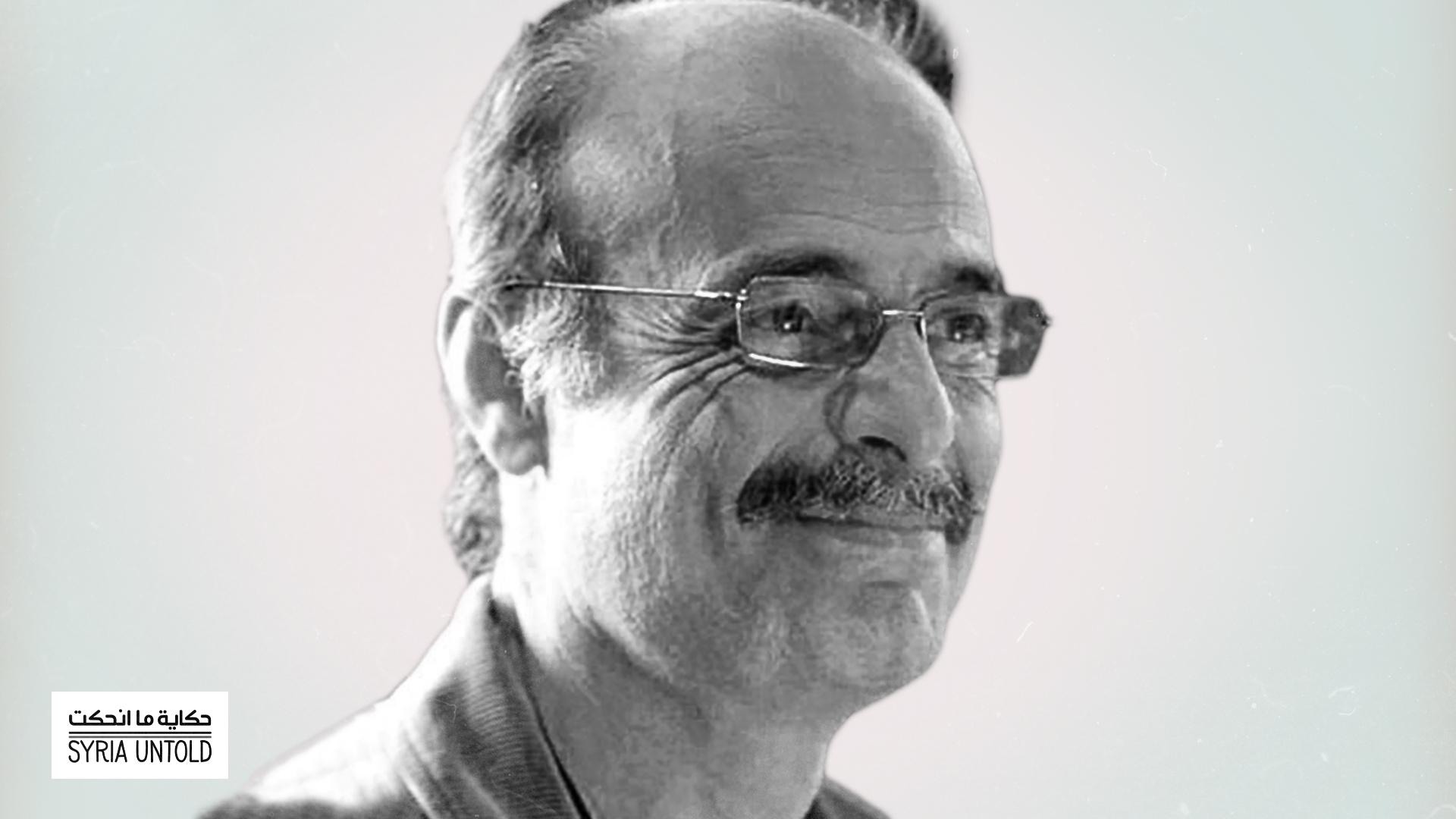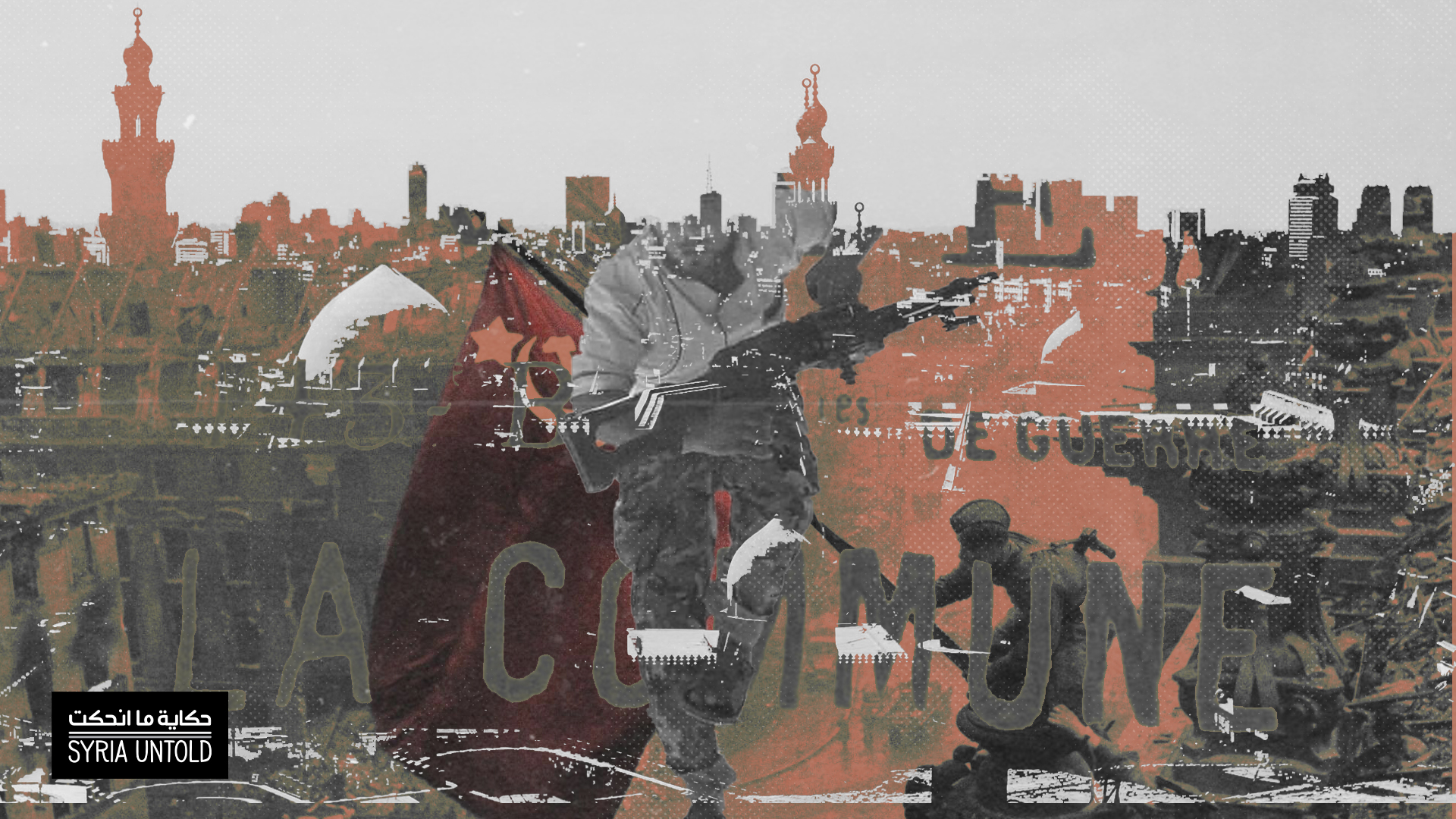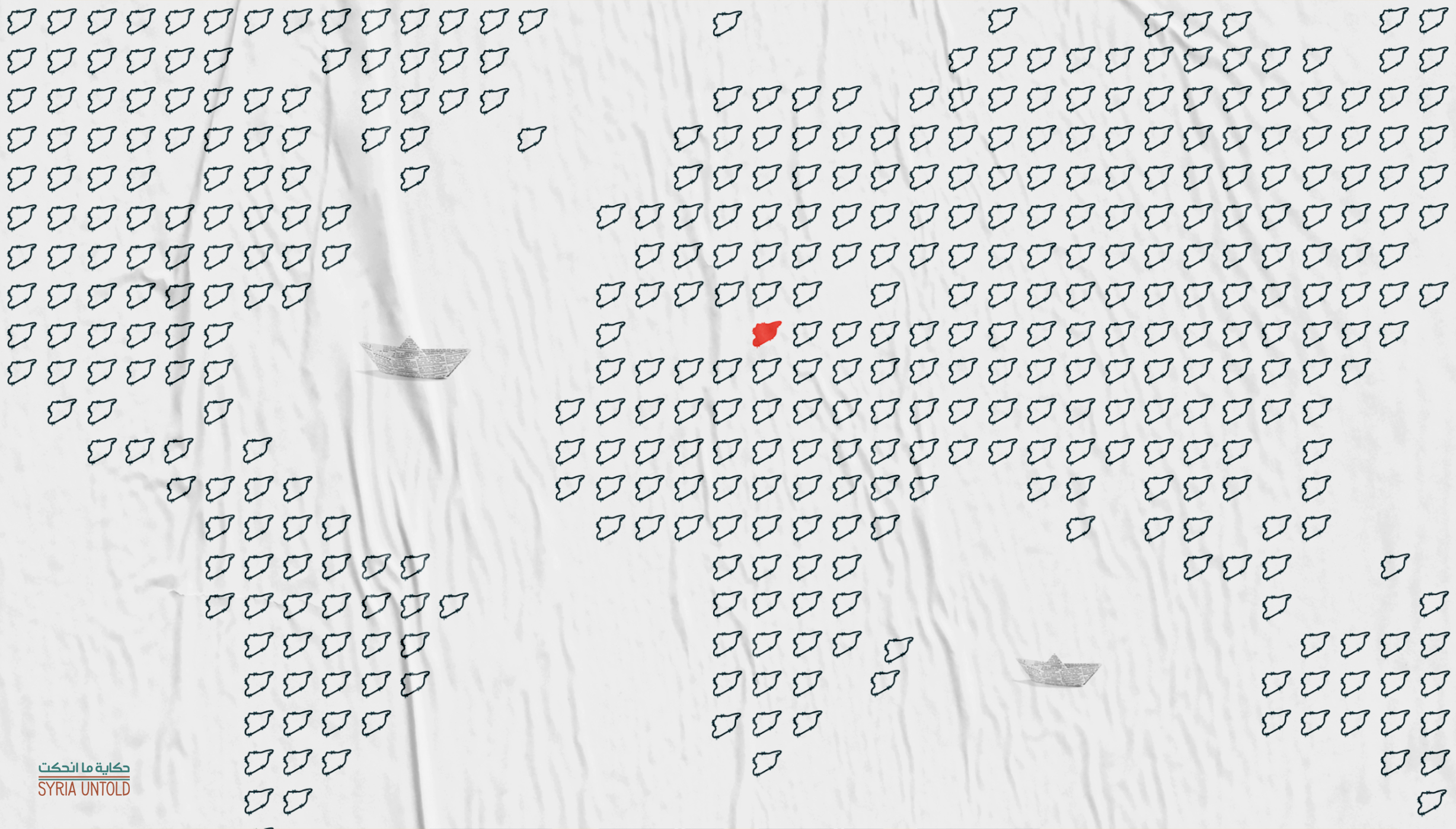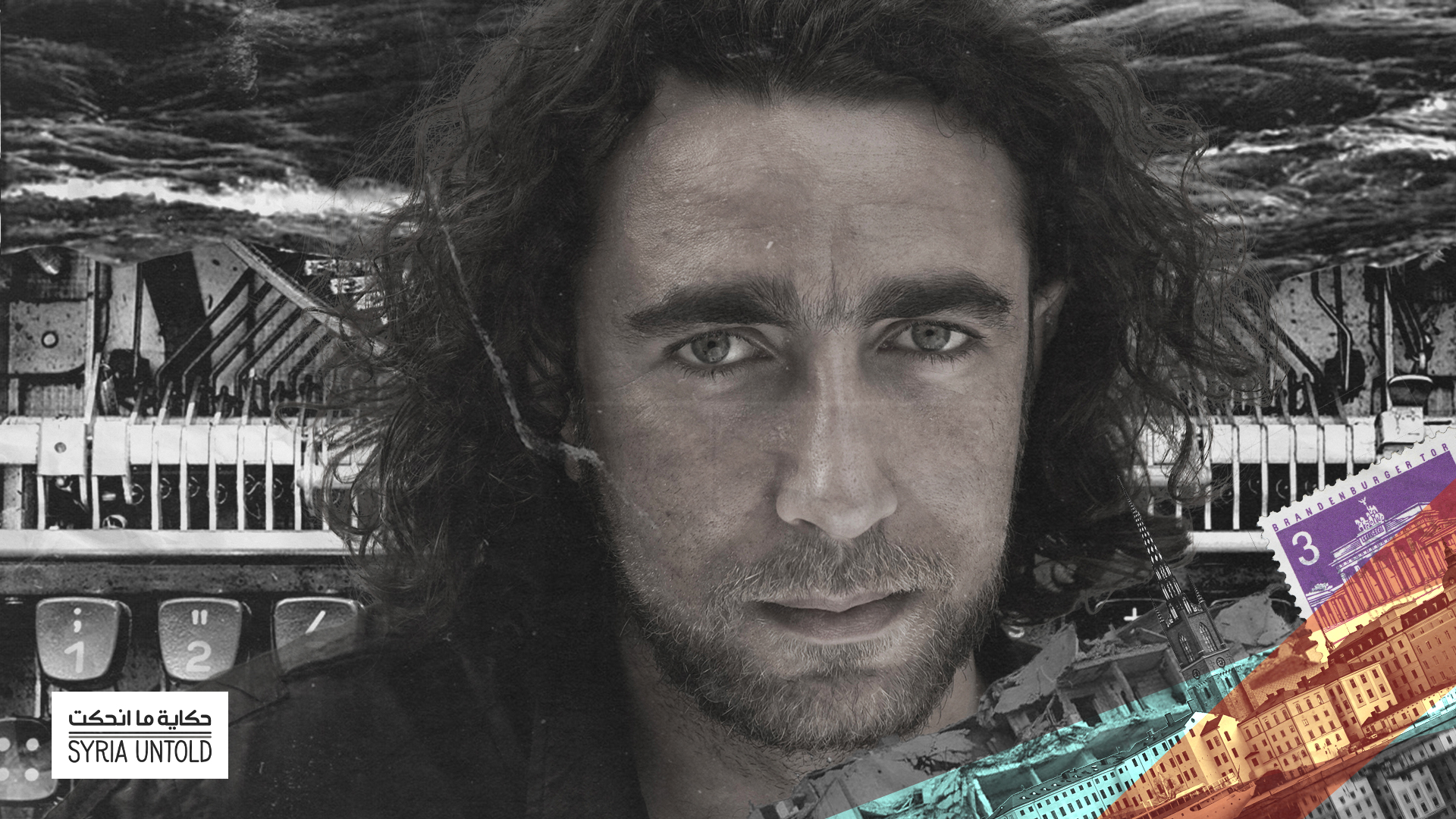Read this conversation in its original Arabic here.
In recent years, film director Soudade Kaadan has become an important name in Syrian cinema, winning international prizes and screening her films in prominent Arab and international festivals. She began her career with the documentary film Two Cities and a Prison (2008), followed by Damascus Roof and Tales of Paradise (2010), both of which incorporate elements of magic realism. Her latest films, including The Day I Lost My Shadow (2018) and Aziza (2019) depart from the documentary genre.
Kaadan speaks below with SyriaUntold about her cinematic, documentary and dramatic choices, and how she handles the characters in her films. She also discusses her feelings toward official institutions such as Syria’s General Organization for Cinema, as well as the difficulty of film production as a woman director.
Kaadan’s films can be considered a sort of “third way” outside outwardly anti- or pro-regime cinema she says, as they are directed at all audiences “without any political bargaining or ideology,” adding that she has abandoned all templates, structures and bureaucracies, and no longer awaits approval to produce her films.
The following conversation was conducted over text, phone and email.
I started out in documentary cinema because that was the only way I could make films at the time. I produced, edited, mixed, color corrected, filmed and wrote the script so that I could do everything on a low budget.
Most observers classify post-2011 Syrian cinema under one of two categories. The first is anti-regime cinema, which is mostly documentary in nature and clearly states its opposition to the regime. The second is what we can call “regime cinema,” which includes regime propaganda and is primarily fictional. In your films we can see something of a “third way.” How do you describe this approach?
I don’t know if my films adopt a third way or if these categories stand the test of time. But what I can say is that I always tried to make human films, and that my political position has always been clear. This starts from my choice of the setting for my stories: where it happens and what happens. This choice of place and characters is a political one, but I am not trying to deliver a direct political speech.
Hala Abdullah: 'I believe in cinema as a means of resistance’
11 June 2021
Within the margins, and breaking free: Syrian cinema
23 January 2021
The audience may realize this aspect or not, this hidden level in any film. But for me, the most important level of a film is its human element. My main concern is what an average person who has lived through war feels, regardless of their political position.
From what I’ve just said, yes, maybe my approach could be considered a “third way” if you like. I am trying to make films directed at all local and international Syrian audiences, without any political bargaining or ideology. I believe that when you talk about a person in a simple way, on their human and social conditions, the audience sympathizes with them and with their suffering, regardless of their political position.
My characters are usually simple: a mother trying to find gas, a father trying to keep his house, a married couple trying to hold onto their memories during war, a teenage girl searching for freedom and love under the bombs. These characters and their stories enable the viewer to empathize with them, wherever they are.
Your first films were documentaries, then you shifted to both feature-length and short drama. Why do you transition between these different genres? How would you describe working in each of these genres, especially after describing your first feature film, The Day I Lost My Shadow, as magic realism?
I started my cinematic work in Syria in 2007 and finished my first documentary film in 2008. At that time, there were only two ways to make a film: either you were part of the General Organization for Cinema—and I certainly wouldn’t be—or you made an independent documentary film with a very low budget. There were no other opportunities for funding, and it was very difficult to find money, especially for your first film.
I started out in documentary cinema because that was the only way I could make films at the time. I produced, edited, mixed, color corrected, filmed and wrote the script so that I could do everything on a low budget, because there wasn’t enough funding for a full team. In most cases, when a director makes their first independent film, they have to do all the technical work themselves in order to get the project done.
Another reason to work with documentaries is that the budget can be low, so there is more freedom in making the film without the pressures of funding.
My first film participated in many festivals. In this film, as with all my other films, I took on the task of communicating with festivals and sending the film. It can be said that necessity dictated the production of my first film, though my dream was to make dramas. This is an old desire of mine. I love working with the actors, the camera crew, writing a new story and creating a new world.
I love working with the actors, the camera crew, writing a new story and creating a new world.
My first foray into magic realism was not in my first feature film, The Day I Lost My Shadow, but rather with my documentary film Damascus Roof and Tales of Paradise, which mixed animation and documentary. The animation represents the magical world of the city’s folk superstitions.
From then on, I noticed that magic realism sneaks into all of my films, even if I didn’t intend to write them that way. Also in my short film Besieged Bread, where soldiers bomb trees, light seeps from them and transforms into another symbolic image of war.
In The Day I Lost My Shadow, I set about writing the film with absolute realism: the realistic Syrian story of a mother searching for gas in the middle of war. The image of losing shadows crept into my writing to express the emotions and images, the trauma of loss that cannot be expressed (by me at least) through words and real events. How do you express the loss of your country, your people, of seeing all this blood? You feel like you’re no longer yourself, that you lost a part of yourself, that you lost your own shadow. Magic realism is based on a very realistic and logical question: How can we express all this pain?
Land, revolutions and lessons from Syria
04 May 2021
Distorting Syria
23 July 2020
You mentioned that you would definitely not be a part of the General Organization for Cinema. What are your views on this organization?
I believe that a director is not an employee, and that they cannot create unless they abandon all templates, structures and bureaucracies. When you have a film project, you cannot wait for your turn, or wait until you obtain approval from one person. When you have a project, you are unable to sleep or do anything else until you get it done. You struggle with all your energy to finish it, you knock on every door to implement it, you risk everything. This feeling, this motive, is greater than any framework of institutional logic.
In your recent drama films, you worked with first-class actors in Syria, such as Sawsan Arshid, Abdelmonem Amairi, Kris Bashar, Samer Ismail and others, while in your first documentary film, Two Cities and a Prison, you worked with children who had been imprisoned in the juvenile prisons of Hasakeh and Damascus. How do you interact with the different people and characters in your films? Do you see a difference between professional actors and documentary film characters?
Of course, interacting with actors and documentary film characters is different. The characters of a documentary reveal things to you in front of the camera, and we do not know much about them. We try to discover one another in front of the camera. It is a reciprocal relationship between the character and the director, one of giving and taking, an intimate conversation between the character and the camera. In my documentaries, I always like the camera to be at the character’s eye level, as if it is a conversation between two people. I like to call documentary films “revelations.”
Two Cities and a Prison is a very special experience because the story is set in a juvenile prison. I tried to rely on very close-up shots, and very few wide shots that would let the viewer breathe. I wanted to convey the situation of teenage prisoners who are kept in enclosed spaces under inhumane conditions. I tried to express how things can change when we give them an opportunity, such as theater, or when someone talks with them in front of a camera. One of the most beautiful moments is when we see how change happens right in front of our eyes, in front of the camera. Even my own personality changed from what it was before this film. In documentary films, we discover a human aspect of ourselves that had been hidden from us.
When you have a project, you are unable to sleep or do anything else until you get it done. You struggle with all your energy to finish it, you knock on every door to implement it, you risk everything.
In a dramatic film, the actors are handled differently. You start out with a script and characters that are already written down. But because my directing is based on improvisation, the characters grow with the actors. This method ultimately depends on the actor’s abilities: there are actors who are able to improvise and add amazing new moments to the characters, and take the script to faraway places. They take on the character and become more acquainted with them than us, the screenwriters. And there are actors from whom you just try to obtain the character as they were written. Working with actors as a director is a form of betting and gambling, as the actor’s improvisational skills aren’t discovered until the moment of rehearsal and filming. Then you try to manage the actor according to these abilities. In all of my films, I have worked with actors I never worked with before, and I don’t work again with the same actors. This has made each of my drama films, whether short or feature-length, an adventure.
I like working with actors more than with the script. An actor becomes the character, and they turn it into a documentary character in the sense that they’ve created a new person with intimate moments both in front of me and the camera. I love discovering something new and surprising with them in front of the camera. I don’t like typecasting an actor into a specific role, and I don’t ask them to just perform it. My directing work is based on partnering with the actor. We are together in this film, and we are trying to transcend our prior abilities and knowledge.
A Syrian visiting a Nazi camp
25 September 2019
It is no secret that there are very few women in the field of cinema, compared to men—especially directors. How do you overcome the difficulties associated with this disparity?
It’s difficult to be a female director, especially in Arab countries. Perhaps this is the reason that I’m the producer of all my films. Before, there were no producers in Syria who asked a woman to direct the films they produced, whether documentaries, dramas or even television series. The first choice was always a man. I chose to be the producer of my films, in partnership with my sister, Amira Kaadan. She both supported me and believed in me, so that I was able to make my films under the most difficult circumstances.
Most women directors in the Arab world today obtain funding and production for their films from Europe. There is very little Arab funding for women directors, perhaps with the exception of Lebanon, where there are equal rights between men and women in film directing—though certainly not at the level of social and civil rights. But in the end, grants and funding opportunities in the Arab region are very scarce, as there is a shortage of institutions that support local cinema. We are forced to take our films and circulate them on the global market, and rely on international funding in order to make them. Our stories stem from our own reality, and from the need to tell these stories, but their audiences are different. This makes the task [of funding] much more difficult, whether you are a woman or man director.
Perhaps you are the only Syrian woman director to have shown your films on an international platform like Netflix. How did you reach this position and how did you react to it?
I don’t think I’m the only Syrian woman director to have shown her films on Netflix; I think there are others, but they don’t exist right now on the platform because it changes, removes and adds films from time to time. Maybe at the moment it’s only me.
To be honest, I’m very happy about [being on Netflix] because I’ve screened my films at many festivals and many people have seen them in different contexts, but it is better for them to be available to a larger audience.
What I didn’t notice before is that the films I’ve made so far fall under the category of cinéma d'auteur. The audience for these types of films is limited. When my films were shown on Netflix, they received a wider audience. However, there were things that I didn’t know would bother a larger audience. For example, I received many messages about people being emotionally affected by seeing a Syrian story on a global platform, but at the same time, the language of the films didn’t tell the story in a direct way. Perhaps this bothered the larger audience, which is looking for a simple, traditional story dominated by suspense.
It is difficult to be Syrian, to make films and to tell a story for your local audience without having the opportunity to show your film to one audience in your own country.
In The Day I Lost My Shadow, the script was trying to make the language used by the characters resemble the language used in reality in Syria, so there were some insults written into the script. I didn’t know that the wider audience might be upset by these insults, and that the film could lose its audience because of a word.
I really don’t know if I would remove these insults from the script as a form of self-censorship, as I feel that the audience would have seen the film in a different way if the insults were no longer there. But in return, the film would lose much of its realism without them being included in the script. Here is the bigger question: are we imposing self-censorship in addition to the existing government censorship for the sake of a larger audience?
Do we have the freedom to tell the story that we want to tell in the way we want to tell it? In which films do we try to reach a larger audience, and in which do we try to convey reality as it is, or renew and break the traditional form of dialogue?
For me, some of my films may be for large audiences, or “box office” films. But I’ve become more experienced in knowing which audience will accept my films, when to make my films accessible to a wider audience, when to be a box office film and when to choose a more niche audience.
Syrian filmmakers generally make and screen their films outside Syria to a largely non-Syrian audience. Platforms like Netflix may provide a solution for the time being, but these filmmakers, like many cultural workers, have lost their core audiences and spaces. How do you cope with this loss?
It is difficult to be Syrian, to make films and to tell a story for your local audience without having the opportunity to show your film to one audience in your own country. Syrians are all over the world now, and there is no longer one single audience. At the same time, this issue isn’t only a result of the war. In most cases, we don’t have the opportunity to show our films in Arab countries or even have Arab production. Few cinemas in the Arab world are interested in screening our films if they aren’t highly commercial. It’s getting more difficult by the day.
This is our everlasting problem: How do we tell these stories and make these films when we don’t have the money to produce them or places to screen them in our home countries and across the Arab world? There are always attempts to gather foreign funding and make our own films, and we try to get the story to a local audience as well as a global one. Sometimes we succeed and other times we don’t.
On the plus side, our attempts to reach these two audiences pushes us to use a more global cinematic language. But on the other hand, we tell stories that perhaps only our own local audience may understand, with our own specific humor and linguistic anachronisms. Lately I’ve begun to believe that the more immersed a story is in the local reality, the more global it suddenly becomes. It is a strange paradox, but a paradox nonetheless. This is the magic of cinema.










